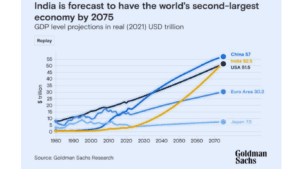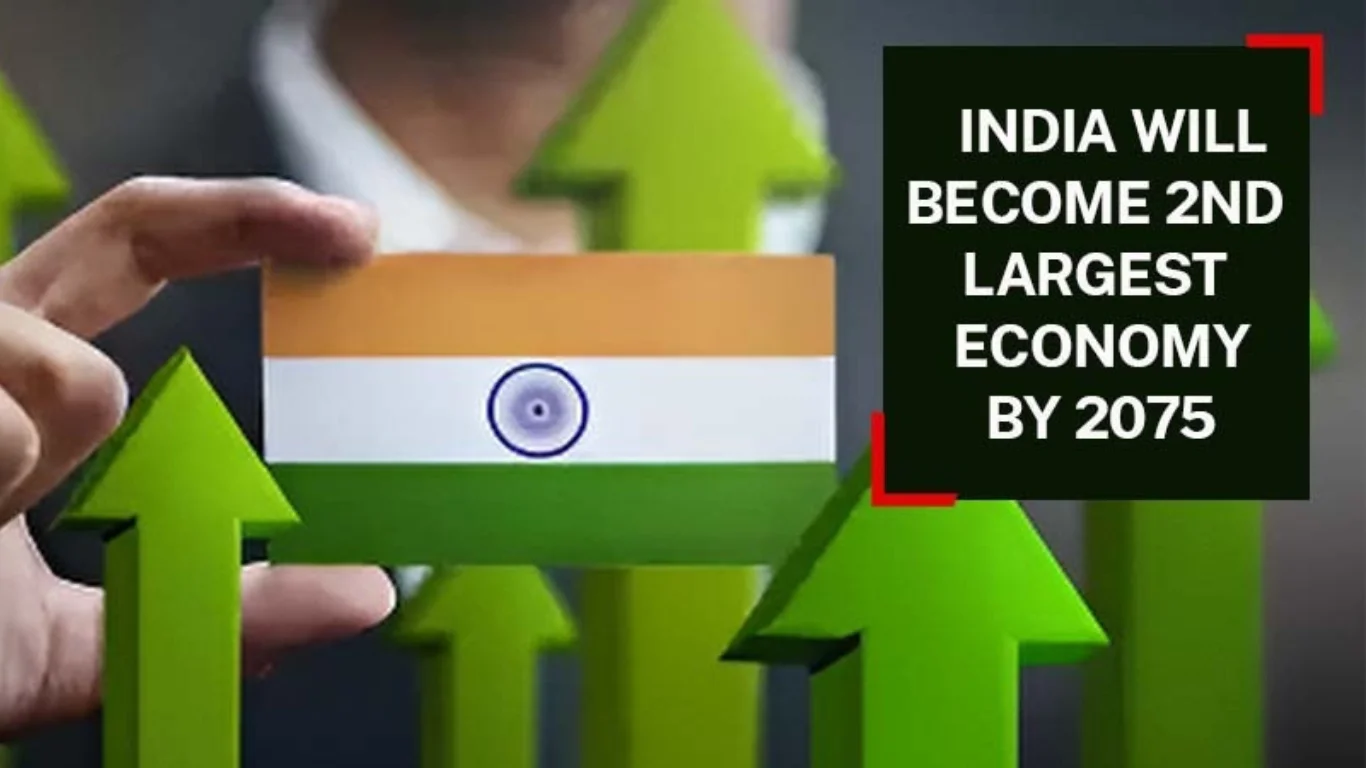India’s Economic Reforms Journey
Learn about India’s ongoing Economic Reforms and how they shape its trajectory towards becoming the World’s second-largest Economy.
India’s Economic Reforms journey over the past few decades has been nothing short of remarkable. The country has witnessed consistent GDP growth, foreign direct investment, and a burgeoning middle class. With a GDP of over $2.8 trillion as of the latest statistics, India has already claimed its spot as one of the world’s largest economies. As of the latest data available, India is the fifth-largest economy in the world, trailing behind the United States, China, Japan, and Germany. However, this is just the beginning of its remarkable journey towards the coveted second spot.

Demographic Dividend:
One of India’s most significant assets in its pursuit of economic supremacy is its demographic dividend. With a population of over 1.3 billion people, India boasts a vast and youthful workforce. This demographic advantage can be harnessed to drive economic growth through increased productivity, innovation, and entrepreneurship.
Technology and Innovation Hub:
India has emerged as a global technology and innovation hub. Cities like Bangalore and Hyderabad have become synonymous with cutting-edge research and development. The country’s thriving IT sector, coupled with a robust startup ecosystem, positions India favorably to lead in the technology-driven industries of the future.
Economic Reforms:
India has implemented a series of economic reforms aimed at liberalizing its markets and attracting foreign investment. Initiatives like ‘Make in India’ and ‘Digital India’ have created an investor-friendly environment, making it easier for businesses to operate and thrive in the country.
Infrastructure Development:
Investments in infrastructure are crucial for India’s economic reforms. Projects like the Bharatmala highway program, Smart Cities Mission, and the development of industrial corridors are transforming the nation’s infrastructure landscape. Improved connectivity and logistics will drive economic efficiency.
Global Trade Relations:
India’s role in global trade has been expanding steadily. Trade agreements with key partners and participation in international forums like BRICS and G20 have increased its global influence. Diversifying export markets and strengthening trade ties will be pivotal in India’s rise.
Energy Independence:
Energy security is a critical aspect of economic reforms. India is aggressively pursuing renewable energy sources, reducing its dependence on fossil fuels. This transition to clean energy not only benefits the environment but also bolsters economic sustainability.
Nurturing Human Capital:
As India sets its sights on the global economic summit, nurturing its human capital becomes paramount. Education and skill development programs must be prioritized to equip the workforce with the knowledge and expertise needed for the industries of the future. Collaboration between academia and industry can bridge the skills gap and ensure a seamless transition into the workforce.
Sustainable Agriculture:
India’s agriculture sector, which employs a significant portion of its population, must undergo modernization and sustainability practices. Implementing advanced farming techniques, promoting crop diversification, and ensuring fair income distribution among farmers will not only bolster the rural economy but also enhance food security.
Financial Inclusion:
Financial inclusion is a powerful tool for economic reforms. Expanding access to banking services, promoting digital payments, and supporting micro-enterprises can uplift millions from poverty and contribute to India’s economic growth.
Fostering Innovation:
Innovation is the lifeblood of economic reforms. Encouraging research and development, protecting intellectual property rights, and fostering a culture of innovation will propel India’s competitiveness in the global market.
Geopolitical Stability:
Stability in the geopolitical landscape is crucial for attracting foreign investment and fostering economic growth. India’s diplomatic efforts and commitment to peaceful coexistence with its neighbors and global powers will play a pivotal role in its economic rise.
Climate Action:
India has already made strides in addressing climate change by investing in renewable energy and adopting ambitious climate goals. As a global economic powerhouse, India can champion international efforts to reduce greenhouse gas emissions, promote sustainable practices, and lead by example in transitioning to a green economy.
Poverty Alleviation:
Despite its economic reforms, India still faces significant income inequality and poverty. As it climbs the economic ladder, India can take proactive measures to reduce poverty rates, improve social safety nets, and ensure that the benefits of economic reforms are distributed equitably among its citizens.
Education Diplomacy:
India’s education system, renowned for producing skilled professionals, can be leveraged for diplomacy. By promoting educational exchange programs and collaborating with other nations on research and development, India can foster goodwill and strengthen international ties.
Healthcare Diplomacy:
India’s pharmaceutical industry is a global leader, and its expertise in healthcare can be a valuable asset for diplomacy. Providing affordable medicines and medical expertise to countries in need can enhance India’s reputation and promote global health.
Cultural Diplomacy:
India’s rich cultural heritage, including its art, music, and cuisine, can serve as a powerful tool for diplomacy. Cultural exchange programs and collaborations can promote intercultural understanding and strengthen diplomatic ties.
Embracing Global Leadership:
India’s rise as the world’s second-largest economy also comes with a responsibility for global leadership. As it takes its place on the world stage, India can play a pivotal role in addressing pressing global challenges such as climate change, sustainable development, and geopolitical stability.
Conclusion:
India’s journey to becoming the world’s second-largest economy is not a distant dream but a tangible reality on the horizon. With a burgeoning population, technological prowess, economic reforms, infrastructure development, global trade relations, and a commitment to clean energy, India is poised to ascend the global economic ranks.
The world watches with anticipation as India’s potential unfolds, and its ascent to economic greatness becomes inevitable. Through strategic planning, continued investment, and global collaboration, India can surpass current expectations, positioning itself as a dominant force in the global economy. The world’s eyes are on India as it embarks on this remarkable journey towards economic supremacy.
G20 SUMMIT 2023 : Unveiling the Global Dynamics in Delhi, India

